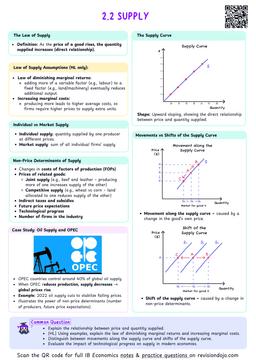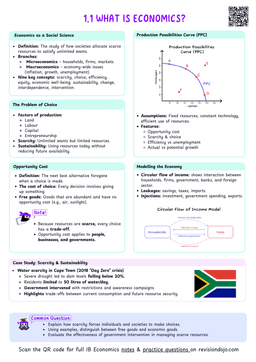Subsidy
Monetary help (direct or indirect payment) offered by the government to firms (sometimes households) to aid in lowering costs of production.
In the context of imports and exports, there are two types of subsidies:
- Production subsidies.
- Export subsidies.
Production subsidies
Subsidies where government gives payments to domestic firms competing with imports in order to encourage them to produce more and protect them.
Diagram

Observing the diagram, before the subsidy, the economy is in free trade and operates at the world price $P_w$ which is below the domestic price $P_d$ that existed without free trade.
- The quantity supplied by domestic producers is $Q_1$ and quantity demanded by consumers is $Q_2$.
- The excess demand $Q_2 - Q_1$ is the initial quantity of imports.
- The government sets a subsidy $s$ per unit, causing the supply curve to shift down by $s$ from $S_{d1}$ to $S_{d2}$
- This indicates an increased supply since the firm gets a subsidy for each unit it produces.
- Therefore, this subsidy increases the price that producers receive from world price $P_w$ to world price plus subsidy $P_w + s$ per unit.
- However the price paid by consumers still stays at $P_w$.
Hence after the production subsidy:
- The quantity supplied is $Q_3$ and the quantity demanded is still $Q_2$.
- Hence the excess demand fall, thus the imports have fallen and producers earn an extra $s$ per unit.
The effects of a production subsidy
Winners

Domestic Producers
- Domestic producers are supplying more ($Q_3$ instead of $Q_1$) at a higher price ($P_w + s$), earning higher revenues.
- Producer surplus increases by the area marked as $a$, indicating the gain from the new prices and trade restriction.
Producer surplus
The difference between the price sellers receive and the lowest price that they are willing and able to accept.
Workers
As domestic producers now produce and sell a larger quantity, the employment in the industry would be protected and increase as well.
Neutral
Unlike the the restrictions before, consumers don't face a higher price since they still purchase at $P_w$ and the same quantity $Q_2$.
NoteThey switch consumption from imported goods to domestic ones, but since the price is the same, it doesn't matter to them.
Losers
Government
- The government has to pay for the subsidy negatively affecting their budget.
- This can be seen by the area of the subsidy $s$ multiplied by the quantity supplied $Q_3$.
- Also creates an opportunity cost as the tax money could've been used elsewhere.
Inefficiency of production
- The reason world price $P_w$ is smaller than domestic price without trade $P_d$ is because foreign producers are more efficient.
- The increase in quantity supplied from $Q_1$ to $Q_3$ represents the increase in domestic production that is inefficient as there is a waste of scarce resources by producing at $P_w + s$ instead of $P_w$.
Foreign producers
Foreign producers now supply fewer goods ($Q_2 - Q_3$ instead of $Q_2 - Q_1$), causing their quantity sold to decrease.
Welfare effects
After the subsidy was imposed:
- The producer surplus increased by $a$ due to the higher price $P_w + s$ they earn and higher quantity $Q_3$ they sell.
- The consumer surplus remains unaffected.
- Therefore the government expenditure on subsidy increased by $a + b = s \times Q_3$.
- Resultantly, the change in social surplus is a decrease of: $a + b - a = b$.
- This change leads to a welfare loss of the area $b$ due to the inefficient production created by the subsidy.
When evaluating production subsidies so far:
- There is no effect on consumers since from their perspective, nothing has really changed.
- This leads to a lower welfare loss for the economy as the only impact is the inefficient production of producers
- However, the production subsidy is also less effective in reducing imports compared to previous restrictions.
Export subsidy
Subsidies where governments make payments to firms for each unit exported to increase export competition.
Diagram

Observing the diagram, before the export subsidy, the economy is in free trade and operated at the world price $P_w$ which is above the domestic price $P_d$ that existed without free trade.
- The quantity demanded by consumers is $Q_1$ and quantity supplied by domestic producers is $Q_2$.
- The excess supply $Q_2 - Q_1$ is the initial quantity of exports.
Unlike before, the domestic country is now more efficient in production.
- The government sets a export subsidy $s$ per unit, causing the supply curve to shift down by $s$ from $S_{d1}$ to $S_{d2}$
- This indicates an increased supply since the firm gets a subsidy for each unit it produces.
- The intersection of $S_{d2}$ and the world price $P_w$ determines the new quantity supplied $Q_4$
- The price earned by producers is world price plus subsidy $P_w + s$
Hence after the export subsidy:
- The quantity supplied rises $Q_4$ and the quantity demanded falls to $Q_3$.
- Unlike production subsidy, domestic consumers also face a higher price $P_w + s$ because firms prioritise their goods towards foreign market, making it more scarce in domestic market.
- Hence the excess supply increases from $Q_2 - Q_1$ to $Q_4 - Q_3$, thus the exports have increase and producers earn an extra $s$ per unit.
The effects of an export subsidy
Winners

Domestic producers
- Domestic producers are supplying more ($Q_4$ instead of $Q_2$) at a higher price ($P_w + s$), earning higher revenues.
- Producer surplus increases by the areas marked as $a + b + c$, indicating the gain from the new prices and trade restriction.
Producer surplus
The difference between the price sellers receive and the lowest price that they are willing and able to accept.
Workers
As domestic producers now produce and sell a larger quantity, the employment in the industry would be protected and increase as well.
Losers
Consumers
- Consumers pay a higher price $P_w + s$ compared to $P_w$ and consume a lower quantity of the good at $Q_3$ compared to $Q_1$.
- Consumer surplus falls by the area marked as $a+b$.
Consumer surplus
The difference between the highest price consumers are willing and able to pay for a good or service and the actual price they end up paying.
Government
- The government has to pay for the subsidy negatively affecting their budget.
- This can be seen by the area of the subsidy $s$ multiplied by the quantity exported $Q_4 - Q_3$.
- Also creates an opportunity cost as the tax money could've been used elsewhere.
Income distribution
The higher price paid by consumers of $P_w + s$ can be seen as regressive as it takes up a larger proportion of lower incomes.
Inefficiency of production
The increase in quantity supplied from $Q_2$ to $Q_4$ represents the increase in domestic production that is inefficient as there is a waste of scarce resources by producing at $P_w + s$ instead of $P_w$.
Foreign producers
Foreign producers will now supply fewer goods since domestic producers supply more due to the increased exports.


